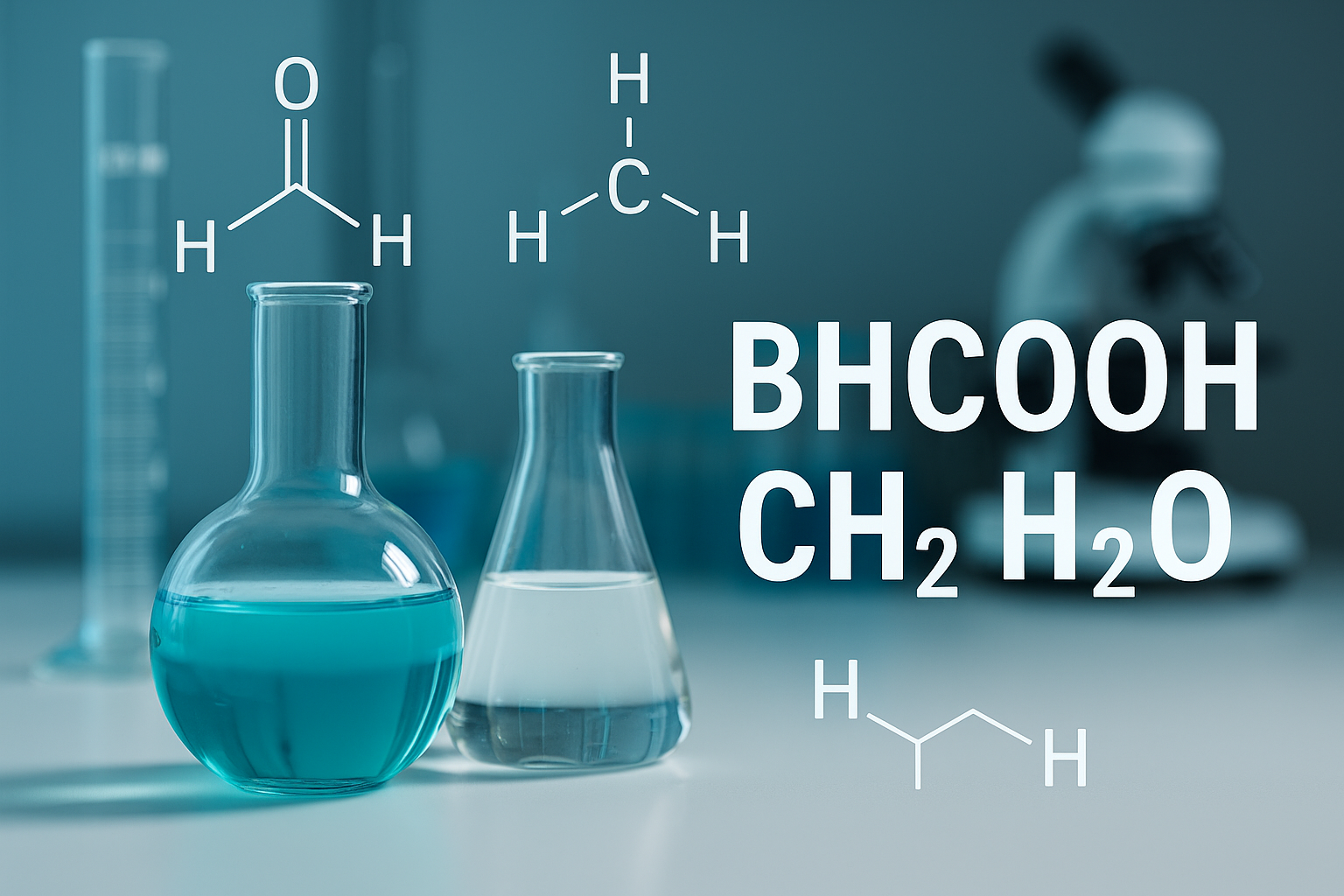INFORMATION
bhcooh-ch2-h2o: The Unseen Chemistry Powerhouse Changing Modern Science

bhcooh-ch2-h2o
Introduction: More Than Just a Chemical Formula
Ever come across the term “BHCOOH CH₂ H₂O” and wondered what it actually means? You’re not alone. To most, it may look like a cryptic chemical code—but beneath this trio lies a fascinating combination that holds serious power in modern chemistry, clean energy, and organic synthesis.
This article breaks it down in simple, everyday language and explains why BHCOOH CH₂ H₂O is worth knowing—whether you’re a student, a researcher, or someone simply curious about how chemistry shapes our world.
What Is BHCOOH CH₂ H₂O?
Let’s decode the components:
- BHCOOH: A likely variation of formic acid (HCOOH) with a boron prefix (“B”), often used in fuel cells or as a green reagent in industrial applications.
- CH₂: The methylene group, an essential building block in organic chemistry, used to link atoms in larger molecules.
- H₂O: Water—nature’s universal solvent and a key player in chemical reactions, biological processes, and environmental science.
Together, they don’t represent a single compound but rather a powerful reactive setup used in labs and industries for eco-friendly chemical transformations.
Practical Significance of BHCOOH CH₂ H₂O
This trio might not be common in casual conversation, but in scientific and industrial contexts, it’s playing a big role. Here’s why:
- BHCOOH is used in low-emission fuel cells, agricultural preservatives, and textile treatments.
- CH₂ groups appear in plastics, medicines, and even DNA.
- H₂O enables reactions by acting as a catalyst, medium, or reactant.
When combined, they become a clean, controlled environment for sustainable reactions.
Breakdown of Each Component
1. BHCOOH – A Greener Form of Formic Acid
While BHCOOH may not be a common textbook term, it closely relates to formic acid, which is:
- Naturally found in ant venom
- Used in eco-friendly cleaning agents
- Applied in rubber and leather industries
- Studied as a fuel source in portable hydrogen fuel cells
Also Read: Formic Acid Overview – PubChem
2. CH₂ – Methylene Group
One of the smallest units in organic chemistry, CH₂ helps link molecules and improve reactivity. It is:
- Found in polymers like polyethylene
- Critical in pharmaceutical synthesis
- A structural part of amino acids and DNA
Also Read: CH₂ in Organic Compounds – ScienceDirect
3. H₂O – The Universal Catalyst
Water is vital not just for life, but for sustainable chemistry. It:
- Dissolves other chemicals for better interaction
- Facilitates reactions like hydrolysis
- Plays a central role in green chemistry
External Resource: Water as a Green Solvent – ACS Publications
How They Work Together
When BHCOOH, CH₂, and H₂O are used in one reaction system:
- BHCOOH brings acidity and energy potential
- CH₂ helps bridge molecules during synthesis
- H₂O ensures safe, effective reactions
This combination is popular in fuel research, green industrial processes, and organic compound development.
Industries Benefiting from BHCOOH CH₂ H₂O
| Industry | Application |
| Energy | Clean hydrogen-based fuel development |
| Pharmaceuticals | Drug manufacturing using CH₂ bridges |
| Agriculture | Soil treatments and feed preservation |
| Environment | Eco-friendly pollutant breakdown |
| Education & Research | Experimental chemistry and biochemistry |
Green Chemistry and Sustainability
This trio is a symbol of the green chemistry movement, which focuses on:
- Reducing chemical waste
- Using water instead of harmful solvents
- Lowering energy consumption
- Creating biodegradable compounds
That makes BHCOOH CH₂ H₂O a critical tool in developing sustainable solutions.
Research and Studies
Recent scientific papers highlight:
- Formic acid’s role in portable fuel cells
- Boron-modified acids improving efficiency
- CH₂ groups in DNA drug synthesis
- Water’s catalytic function in safer reactions
This shows how real labs are leveraging these components to develop next-gen technologies.
FAQs About BHCOOH CH₂ H₂O
Q1: What does BHCOOH CH₂ H₂O stand for in chemistry?
It represents a combination of formic acid (with boron), a methylene group, and water—used as a reaction system in eco-friendly chemistry.
Q2: Is BHCOOH an official compound?
Not a standard one, but likely a research-grade version of formic acid with modifications for fuel cells or catalysts.
Q3: Where is CH₂ commonly used?
In plastics, medicines, proteins, and organic synthesis. It’s one of the most used groups in modern chemistry.
Q4: What does H₂O do in these reactions?
It serves as a reaction medium, dissolving materials, speeding up processes, and enabling clean, safe chemical transformations.
Q5: Why combine these three?
Together, they offer a balanced reaction setup that’s clean, effective, and sustainable—ideal for modern labs and industries.
Q6: Is this trio found in nature?
Parts of it are—formic acid in ants, CH₂ in organic compounds, and H₂O everywhere. Their combination, however, is mostly used in controlled systems.
Q7: Is this eco-friendly?
Yes. It’s widely used in green chemistry practices, aiming to reduce waste and environmental harm.
Q8: What industries use BHCOOH CH₂ H₂O systems?
Energy, pharmaceuticals, biotechnology, and environmental science all benefit from this chemical combination.
Final Thoughts: From Code to Real-World Impact
While “BHCOOH CH₂ H₂O” may look like a random formula, it symbolizes the future of smart, sustainable chemistry. Whether it’s in fuel cells, pharmaceuticals, or clean water projects, this trio plays a quiet but powerful role in creating a better tomorrow.
For readers, students, and professionals—understanding this combination is one step closer to understanding the science that powers our lives.
Also Read:IOFBodies.com Applications: Revolutionizing Health, Fitness, and Security
